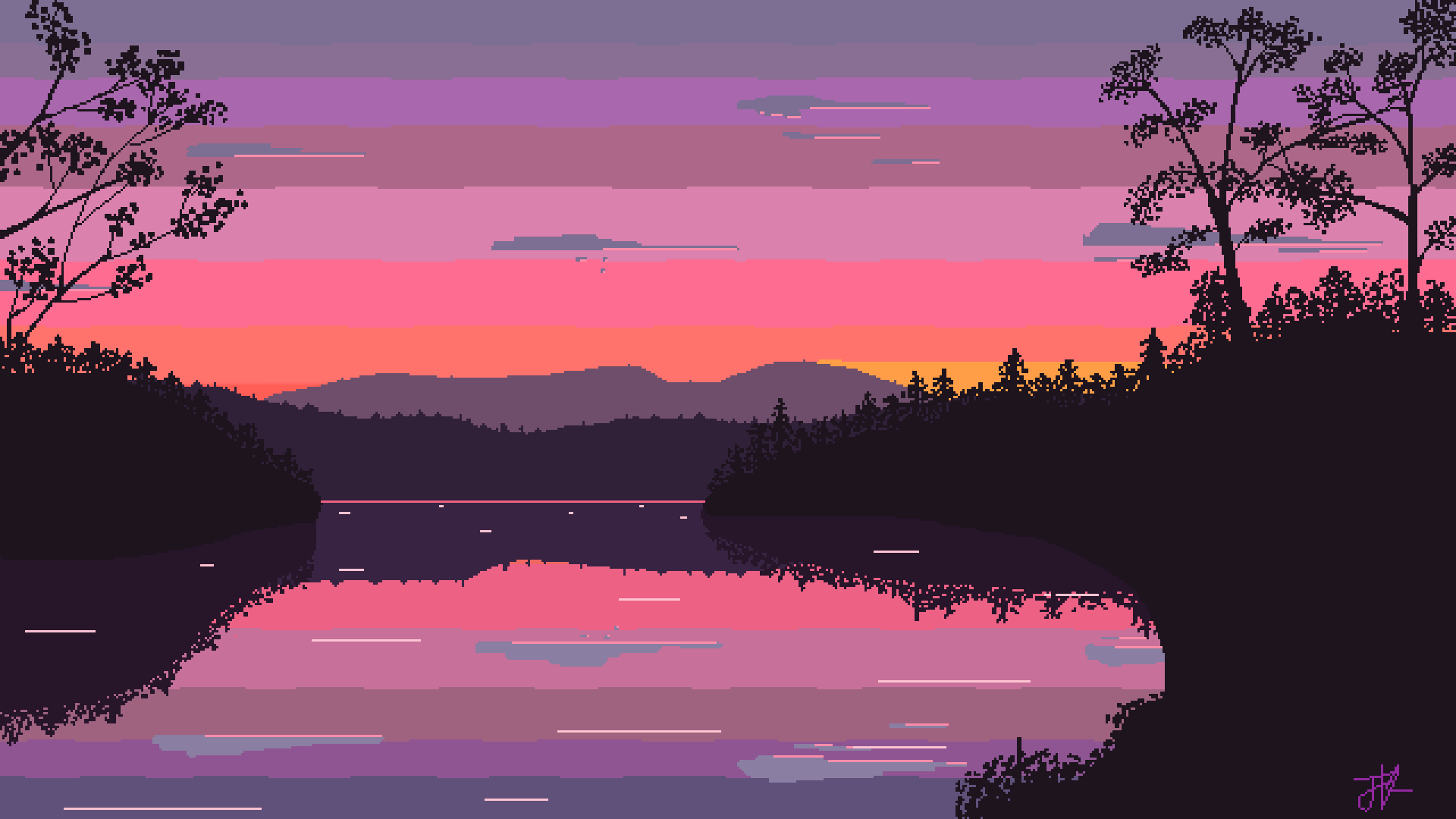Aesthetic pixel art computer backgrounds serve as a whimsical escape into a realm where imagination meets digital artistry. These visuals encapsulate the charm of retro gaming aesthetics while inviting a new generation to embrace a unique stylistic expression. In an era where technology continuously advances, the nostalgia associated with pixel art resonates strongly, reminding us of the simplicity of earlier computing eras. This phenomenon is not merely a trend; it symbolizes a profound shift in how we perceive art and design in our digital lives.
Digital canvases adorned with pixel art backgrounds elicit a sense of familiarity and comfort. Each image embodies a narrative that transcends its simple formations, inviting viewers to explore narratives crafted in vibrant colors and abstract forms. The meticulous arrangement of pixels can evoke emotions, inspire creativity, and even provoke contemplation. This aesthetic fosters a unique atmosphere, particularly in workspaces where a harmonious balance between productivity and inspiration is critical.
Engaging with pixel art computer backgrounds unlocks a plethora of interpretations. Each piece can be a conversation starter, a backdrop that invites curiosity and prompts discussion among peers, or a personal sanctuary on an otherwise mundane screen. The shift in perspective that these artworks instigate encourages users to delve deeper into the narrative woven within pixels. Suddenly, a simple backdrop transforms into a dialogue between the creator and the viewer, urging an exploration of themes, narratives, and emotions embedded in the visuals.
The intricacies of pixel art lie in their capacity to captivate with a seemingly straightforward style while offering depths of detail upon closer inspection. The precision required to create art in such a limited palette and resolution speaks to the artist’s skill and vision. Often, these creations draw inspiration from nature and fantasy, capturing idyllic scenes of landscapes, whimsical creatures, or abstract designs that beckon viewers to escape reality, if only for a moment. Each pixel serves as a building block of a larger artistic statement, demanding attention and reflection.
Moreover, aesthetic pixel art backgrounds introduce an economic perspective in art acquisition. In contrast to high-resolution digital art, pixel art can often be reproduced and distributed at a lower cost. This accessibility opens doors for budding artists and enthusiasts alike to not only consume art but also create their masterpieces. The democratization of art through pixelation encourages individual expression and experimentation, fostering an environment where originality can flourish irrespective of financial constraints.
Adding pixel art backgrounds to one’s computer also cultivates an appreciation for the intersection of technology and artistry. As society becomes increasingly digitized, the roles of artists evolve alongside technological advancements. Pixel art, often born from the constraints of early computing and gaming systems, showcases the inherent beauty within limitations. It serves as a reminder that inspiration can emerge from necessity, prompting innovators to reimagine their medium.
The allure of pixel art is also magnified by its versatility. It can be seamlessly integrated into various themes and styles, appealing to diverse audiences. From minimalist designs that employ soft color palettes to vibrant, chaotic scenes bursting with life, pixel art offers something for everyone. This adaptability fosters an inclusive artistic environment where individuals can find a visual representation of their identity or personality.
As a testament to its enduring popularity, online platforms are bursting with pixel art resources. Artists and enthusiasts alike are encouraged to share their work, resulting in a thriving community that spans shores and cultures. Forums, social media, and digital galleries allow for real-time feedback and collaboration, enriching the artistic process. This communal aspect not only motivates creators but also establishes a vibrant ecosystem of inspiration and innovation.
Furthermore, pixel art can serve as a powerful educational tool. Its simplicity makes it an ideal medium for teaching fundamental concepts in art, design, and computer science. Students can learn about color theory, spatial relationships, and even coding through pixel art projects. Such interdisciplinary applications enhance the learning experience, bridging gaps between technical skills and creative expression.
The health benefits linked to personalized and aesthetically pleasing digital environments cannot be overstated. Studies have shown that engaging with art, even in the form of a computer background, can reduce stress and improve mental health. Pixel art offers a form of escapism, enabling users to immerse themselves in a visual fantasy that can alleviate the burdens of daily life. The vibrant colors and playful designs can uplift spirits and provide a refreshing break from exhaustive tasks.
In summary, aesthetic pixel art computer backgrounds transcend the limitations of traditional art forms. They represent a melding of nostalgia with contemporary creativity, an invitation to explore beyond the surface. The symbol of escapism, economic accessibility, and adaptability reveals a dynamic landscape of artistic expression. As technology continues to evolve, embracing and celebrating pixel art can lead to an enriched understanding of creativity in a modern context. In the end, these backgrounds serve not only as decorative elements of digital experience but as a manifestation of the enduring human spirit to create, explore, and express.
